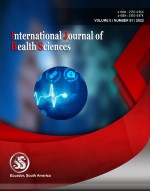To evaluate the efficiency of transcutaneous electrical nerve stimulation (TENS) on stimulated and unstimulated salivary flow rates in diabetic patients: An original research
Keywords:
Diabetes, Transcutaneous electric nerve stimulation, unstimulated saliva, Stimulated salivaAbstract
Aims and objectives: The aim of the present study is to assess the effectiveness of TENS as a means of stimulating salivary function in type2 diabetes mellitus patients. Methods: A sample of 100 patients having diabetes mellitus were enrolled for the study after taking the informed consent. Unstimulated saliva was collected by low forced spitting method for 10 minutes in a graduated measuring jar. Stimulated saliva was collected after placing TENS electrodes over the cheek for 10 minutes in a graduated measuring jar. The values were analyzed and compared.Results: Our study sample included 100 diab etic patients, out of which 52 were males and 48 were females. The age of the patients ranged from 30 yrs to 78 yrs with a mean age of 48.8 yrs. The blood glucose level was found to be highest among males when compared to females. The improvement in salivary flow rates by using TENS was found to significant in different age groups. Conclusion: The study suggests that in patients with Diabetes, TENS was found to be helpful to improve the salivary flowrate. Female diabetic patients showed a statistically significant improvement in salivary flow rates after using TENS.
Downloads
References
Glick M. Burket’s Oral Medicine. 12th ed. Connecticut(USA): People’s medical publishing house; 2015.
Moore PA, Guggenheimer J, Etzel KR, Weyant RJ, Orchard T. Type 1 diabetes mellitus, xerostomia, and salivary flow rates. Oral Surg Oral Med Oral Pathol Oral Radiol Endod. 2001 Sep;92(3):281-91.
Expert committee on the diagnosis and classification of diabetes mellitus. Report of the Expert Committee on the Diagnosis and Classification of Diabetes Mellitus. Diabetes Care. 1997 Jul;20(7):1183-97.
Chavez EM, Taylor GW, Borrell LN, Ship JA. Salivary function and glycemic control in older persons with diabetes. Oral Surg Oral Med Oral Pathol Oral Radiol Endod. 2000 Mar;89(3):305-11.
Ramer E. Acupuncture: A possible therapeutic modality in the treatment of craniomandibular dysfunctions. Cranio. 1989 Apr;7(2):144-51.
Sreebny LM, Yu A, Green A, Valdini A. Xerostomia in diabetes mellitus. Diabetes Care. 1992 Jul;15(7):900-4.
Cao X. Scientific bases of acupuncture analgesia. Acupunct Electrother Res. 2002;27(1):1-14.
American Diabetes Association. Diagnosis and Classification of Diabetes Mellitus. Diabetes Care. 2010 Jan; 33(Suppl 1): S62–S69.
Gutman D Ben-Aryeh H. The influence of age on salivary content and rate of flow. Int. J. Oral Surg. 1974;3(5):314-7.
Lopez-Pintor RM, Casanas E, Gonzalez-Serrano J, Serrano J. Xerostomia, Hyposalivation, and Salivary Flow in Diabetes Patients. J Diabetes Res. 2016 Jan;(1):1-15.
Scully C, Felix DH. Oral medicine -- update for the dental practitioner: dry mouth and disorders of salivation. Br Dent J. 2005 Oct 8;199(7):423-7.
Hargitai IA, Sherman RG, Strother JM. The effects of electrostimulation on parotid saliva flow: a pilot study. Oral Surg Oral Med Oral Pathol Oral Radiol Endod. 2005 Mar;99(3):316-20.
Johnson MI. Transcutaneous Electrical Nerve Stimulation(TENS). Research to support clinical practice.
Dyasnoor S, Kamath S, Khader NFA. Effectiveness of Electrostimulation on Whole Salivary Flow Among Patients with Type 2 Diabetes Mellitus. Perm J. 2017;21:15-164
Gershon H, Gershon D. ALTERED ENZYME MOLECULES IN SENESCENT ORGANISMS: MOUSE MUSCLE ALDOLASE. Mech Ageing Dev. 1973 Apr-May;2(1).
Published
How to Cite
Issue
Section
Copyright (c) 2022 International journal of health sciences

This work is licensed under a Creative Commons Attribution-NonCommercial-NoDerivatives 4.0 International License.
Articles published in the International Journal of Health Sciences (IJHS) are available under Creative Commons Attribution Non-Commercial No Derivatives Licence (CC BY-NC-ND 4.0). Authors retain copyright in their work and grant IJHS right of first publication under CC BY-NC-ND 4.0. Users have the right to read, download, copy, distribute, print, search, or link to the full texts of articles in this journal, and to use them for any other lawful purpose.
Articles published in IJHS can be copied, communicated and shared in their published form for non-commercial purposes provided full attribution is given to the author and the journal. Authors are able to enter into separate, additional contractual arrangements for the non-exclusive distribution of the journal's published version of the work (e.g., post it to an institutional repository or publish it in a book), with an acknowledgment of its initial publication in this journal.
This copyright notice applies to articles published in IJHS volumes 4 onwards. Please read about the copyright notices for previous volumes under Journal History.
















